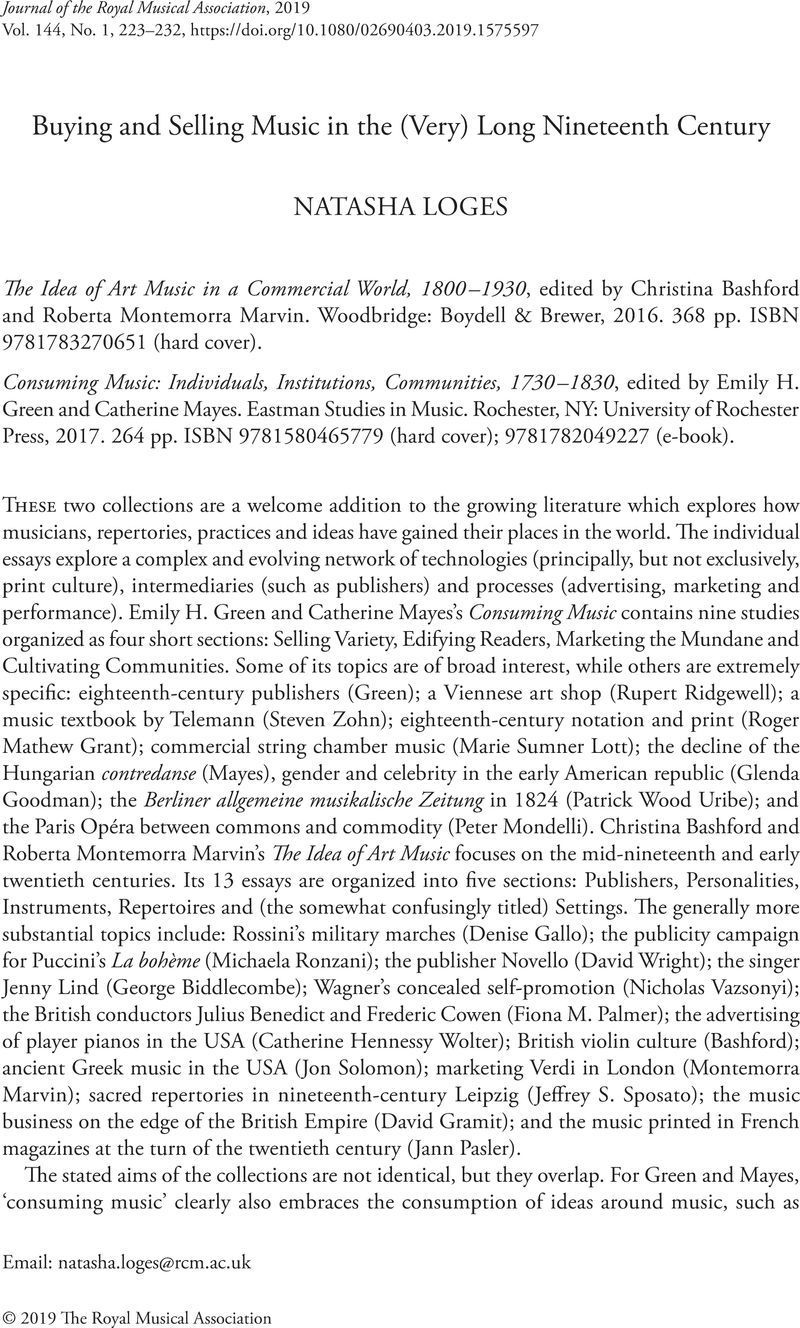No CrossRef data available.
Published online by Cambridge University Press: 01 January 2020

1 See, for example, Martha Woodmansee's The Author, Art and the Market: Rereading the History of Aesthetics (New York: Columbia University Press, 1994).
2 Karol Berger, ‘The Ends of Music History, or: The Old Masters in the Supermarket of Cultures’, Journal of Musicology, 31 (2014), 186 –98 (p. 187).
3 The Musician as Entrepreneur, 1700 –1914: Managers, Charlatans, and Idealists, ed. William Weber (Bloomington, IN: Indiana University Press, 2004).
4 See Karen Leistra-Jones, ‘Staging Authenticity: Joachim, Brahms, and the Politics of Werktreue Performance’, Journal of the American Musicological Society, 66 (2013), 397–436.
5 See Benjamin Binder, ‘Song in Concert as Observed by the Schumanns: Toward the Personalization of the Public Stage’, German Song Onstage: Lieder Performance in the Nineteenth and Early Twentieth Centuries, ed. Natasha Loges and Laura Tunbridge (forthcoming, Indiana University Press).
6 See Natasha Loges, review of Marie Sumner Lott, The Social Worlds of Nineteenth-Century Chamber Music: Composers, Consumers, Communities, in Music and Letters, 98 (2017), 144–7.